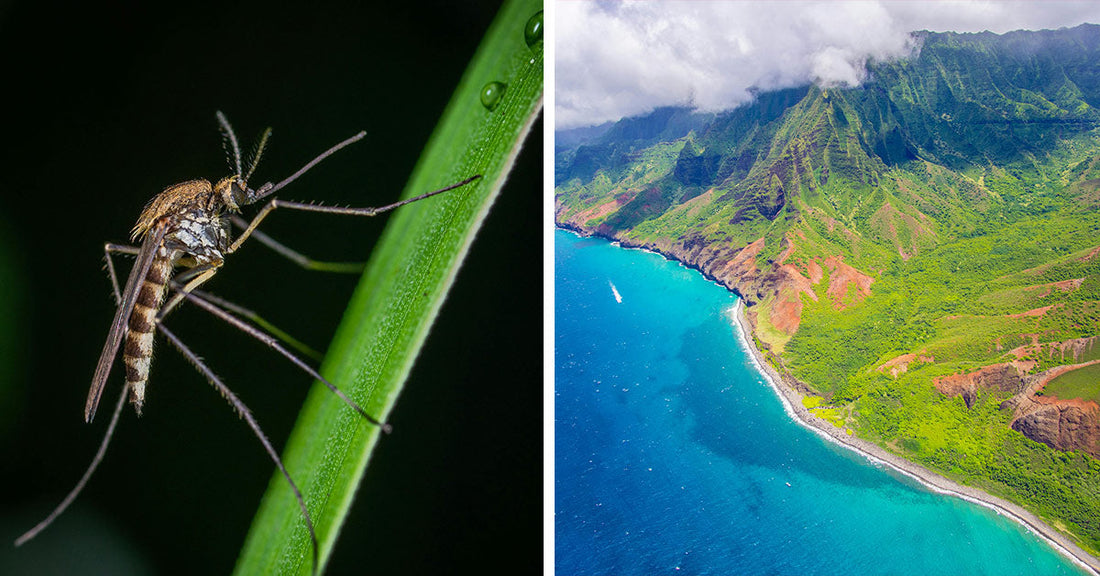Scientists Unleash Mosquito Swarms to Rescue Hawaii’s Dying Birds
Matthew Russell
In the skies above Hawaii’s remote mountain forests, a strange sight has become increasingly common: drones releasing canisters filled with live mosquitoes. It might sound like a sci-fi horror story, but it’s part of a critical conservation effort to save Hawaii’s native birds from extinction.
The threat isn’t the mosquitoes being released — it’s the ones already there.

Hawaii is using drones to drop lab-raised mosquitoes into native bird habitats.
The Avian Crisis in Hawaii
Hawaii is experiencing an ecological emergency. The islands, once teeming with birds like the colorful honeycreepers, are now eerily quiet.
Over 50 honeycreeper species once thrived across the archipelago. Today, only 17 remain, and several are on the brink of vanishing forever, including the ʻakekeʻe, ʻākohekohe, and kiwikiu, according to Smithsonian Magazine.
The primary culprit? Avian malaria, a deadly disease spread by non-native mosquitoes. These insects arrived in Hawaii in the early 1800s aboard whaling ships and have since become vectors of devastation, Vox reports. For birds that evolved in isolation with no natural resistance, even a single bite can be fatal.
Until recently, high-elevation forests provided refuge. The cooler temperatures kept mosquitoes away. But climate change is raising temperatures, allowing the insects to climb higher and invade those last safe zones, Forbes reports.
 Over 30 species of honeycreepers have already gone extinct in Hawaii.
Over 30 species of honeycreepers have already gone extinct in Hawaii.
Turning Mosquitoes Against Themselves
The solution, spearheaded by the multi-agency coalition Birds, Not Mosquitoes, is as unconventional as the problem. Scientists are using the insect equivalent of birth control.
They’re breeding male mosquitoes infected with a naturally occurring bacterium called *Wolbachia*. When these males mate with wild females, the resulting eggs fail to hatch. Over time, this suppresses the mosquito population without harming other wildlife.
“The IIT we’re using for conservation was first developed for human health,” Chris Farmer of the American Bird Conservancy told Vox.
These lab-raised males don’t bite, don’t carry disease, and don’t disrupt Hawaii’s native ecosystems.
“It erects an invisible barrier,” Farmer explained, “so that these mosquitoes can’t get up to the forests where these birds remain.”

Released mosquitoes can't bite or spread disease—they are harmless to people and wildlife.
Why Drones?
For over a year, helicopters have been dropping capsules filled with *Wolbachia*-infected male mosquitoes into the forests of Maui and Kauai. According to BGR, more than 40 million have been released to date.
But helicopters have limitations. They’re costly, risky for pilots, and weather-dependent. Enter drones.
Eight-foot-long unmanned aircraft are now being tested to distribute mosquitoes more safely and flexibly. Each drone carries a temperature-controlled chamber containing thousands of mosquitoes inside biodegradable pods. Once dropped, the pods protect the insects until they’re ready to fly away, Smithsonian Magazine reports.
Though drones can carry fewer insects per flight than helicopters — about 23,000 compared to 250,000. According to Forbes, they’re easier to deploy and can access hard-to-reach areas quickly, especially in Hawaii’s unpredictable weather conditions.

Climate change is letting mosquitoes invade cooler mountain habitats once safe for birds.
Is It Working?
So far, scientists don’t know. It’s still early, and studies are ongoing.
“We’re not expecting overnight results,” Christa Seidl of the Maui Forest Bird Recovery Project told Vox.
But similar efforts using the same technique — called the incompatible insect technique, or IIT — have shown promise elsewhere. In parts of Florida, Mexico, and China, *Wolbachia*-infected mosquitoes helped reduce the spread of dengue and other diseases, the World Mosquito Program reports.
A Last Chance for Survival
Hawaii’s forest birds don’t have time to waste.
“This is the last chance to save most of our remaining songbirds,” Farmer said.
Already, the ‘akikiki — a species native to Kauai — is considered functionally extinct in the wild, Smithsonian Magazine reports.
The campaign’s success could hinge on scale. Experts like UC Santa Cruz’s Marm Kilpatrick say that to fully wipe out the disease-carrying mosquitoes, millions or even billions of lab-raised males may need to be released all at once. That might not be feasible — but slowing the spread is still a win.
Chris Warren of Haleakalā National Park told NPR that he believes in trying everything possible.
“The only thing more tragic than these things going extinct would be them going extinct and we didn’t try to stop it,” he said.

